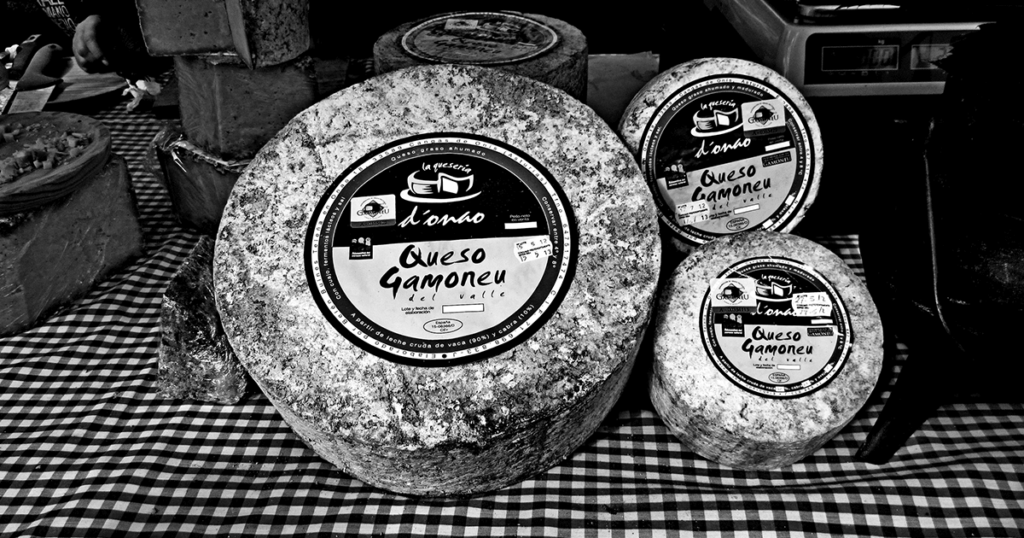
On the outskirts of Gijón, an excavated hilltop settlement where Astures once dwelt in shallow holes is now preserved as Campa Torres, an archeological monument with a museum alongside. I drove there up a winding road on the western edge of the city the other day, passing some houses, some fields with cows and a few pigs and geese, some apple trees. Lines of stones piled thigh-high made walls. Everything was soggy from the recent rains. At the top I got out and looked around.
The settlement was established on the hill for strategic reasons, and the view was long. Beyond the particulars of modern rural life were the unchanging mountains. Into these mountains and back out again came and went the Astures, Romans, Visigoths, and Moors, following well-used trails and roads—many the same roads I use now.
Among my students are a couple of travelers, by which I mean people with wanderlust, eager to board a plane and then, somewhere utterly new, disembark, look about, and soon find a restaurant to eat at. Just the other day, one of these students said how incomprehensible it was to him that people can travel and come home without knowing what the locals eat. He’s a strong-looking fellow with a mariner’s tousled, gray-streaked curls, wild beard, and ample belly. “Does that make sense?” he asked. I didn’t answer.
Salas, over the mountains, is a fine old town with a lovely castle; right above Oviedo, the capital city of Asturias, is Monte Naranco, with two 9th-century pre-Romanesque buildings on its slopes; in Cangas de Onís, the one-time seat of the Kingdom of Asturias, an arched Roman bridge crosses the river. Closer by, in the center of Gijón, are the Roman baths, buried then re-discovered and excavated. But what I know best about Salas are the hazelnut cookies called carajitos del profesor, and I know to go to Oviedo for a carbayón, a pastry filled with almond paste and coated in sugar. In Cangas de Onís is the salty blue cheese called Gamonéu. Gijón, sadly, is known for its shoe shops, but I have learned where to find certain delicacies. The Asturian bean stew, fabada, is served everywhere, and you can also find the fixings, so I make it once a week. Before I raise my brows again in disbelief first at wanderlust, then at traveling to eat, I’ll remember where I am and what I’ve had for lunch.
The earth at Campa Torres, turned up by moles, is rich and dark. On a previous trip here with a gardening friend, he scooped up a handful of the dirt. “Look at that,” he said, “feel that.” He was in ecstasies. He has lived nearly all his life within a 20-mile radius of this place. Here on the hill above the city, he sank to his knees to better examine the fresh earth in all its glory. Perfect soil, he told me, for fabes de la granja, the beans used in fabada. Absolutely perfect.

